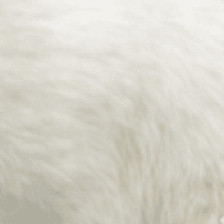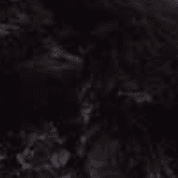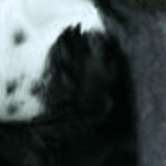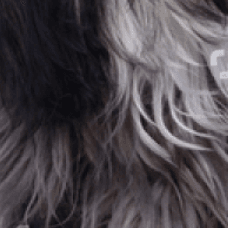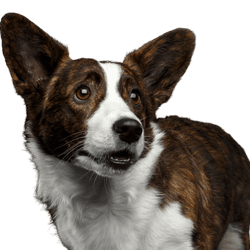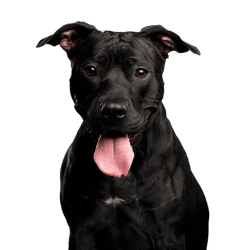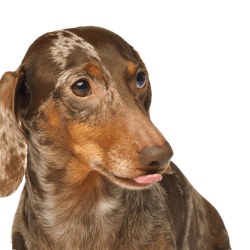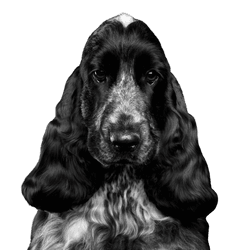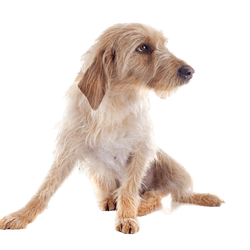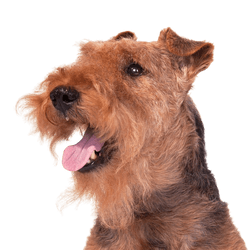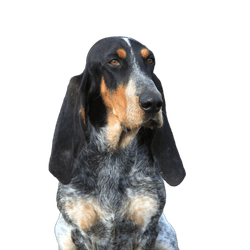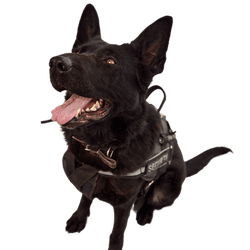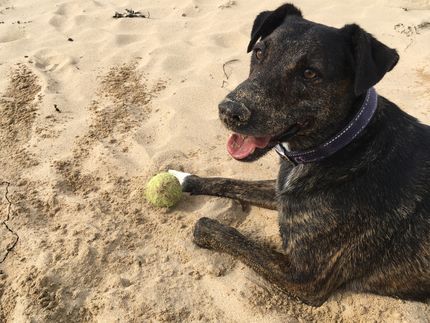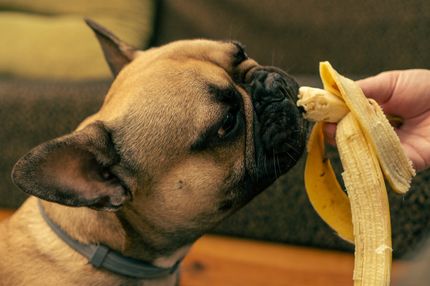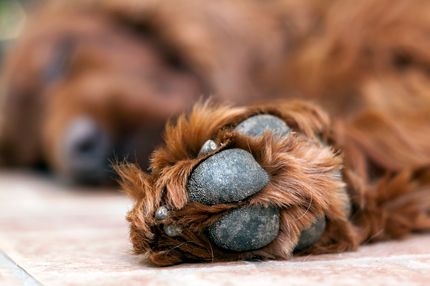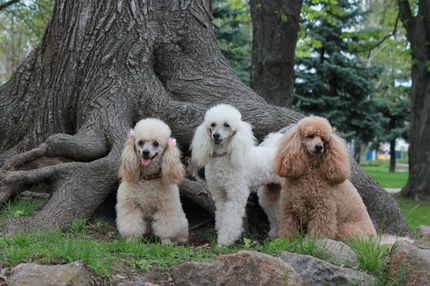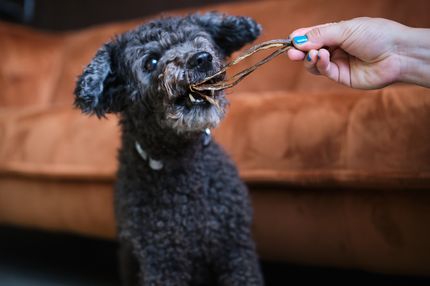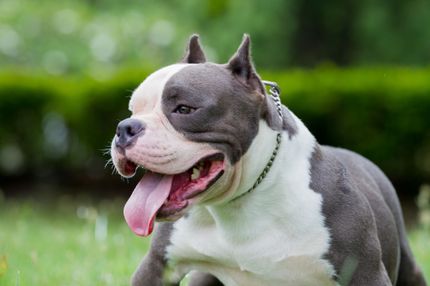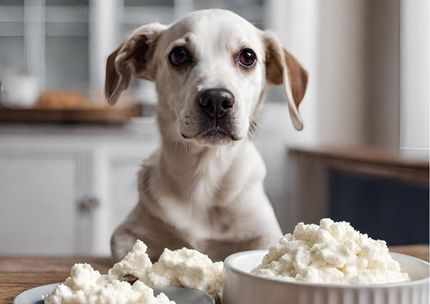Facts & Origin
Origin and History of the Miniature Schnauzer
The origin of this old breed is in Germany, in the Frankfurt am Main area. There, in 1880, under the name "rough-haired Miniature Pinscher" began the first certified official breeding. But the breed is much older: its ancestors probably came from a cross between medieval beaver dogs and shepherd dogs. Similar looking dogs like the Miniature Schnauzer can also be seen on medieval paintings.
In Baden-Württemberg and Bavaria in the 15-19th centuries, the breed was extremely popular with farmers and carters as companion, guard and stable dogs. The small dogs were used for:
- guarding house and yard
- fighting rats and mice
Dog with beard
Characteristic (and name-giving) for this dog breed is the beard. It is not a feature for show, but the beard served to protect them from rough ground as well as the rodents they were bred to fight.
Suitability and attitude
The Miniature Schnauzer makes an excellent family and companion dog. He is a great partner for beginners as well as for older people. However, due to his moderate need for exercise, he can also be enthusiastic about some dog sports.
The Miniature Schnauzer as a hypoallergenic dog
Even if this term is often criticized: Miniature Schnauzers are also suitable for some people with dog allergies. They are considered more hypoallergenic than other dog breeds. However, this should be tested individually in each case to avoid negative surprises.
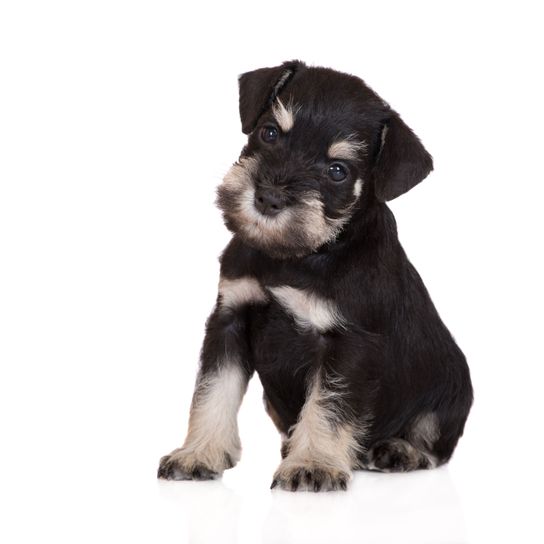
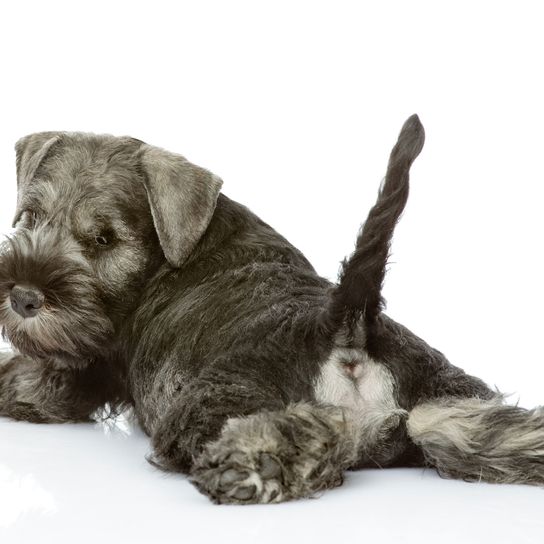
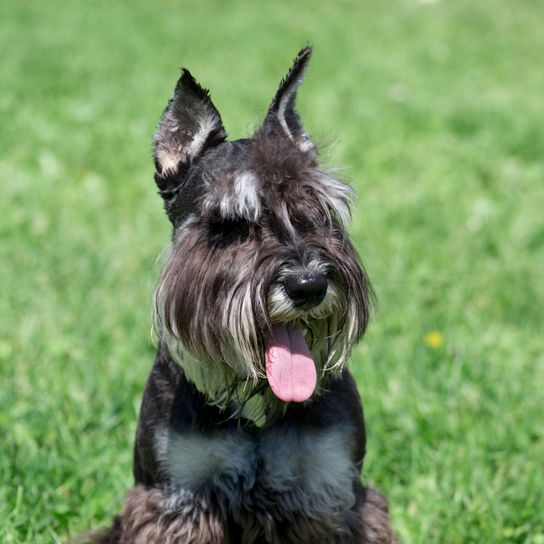
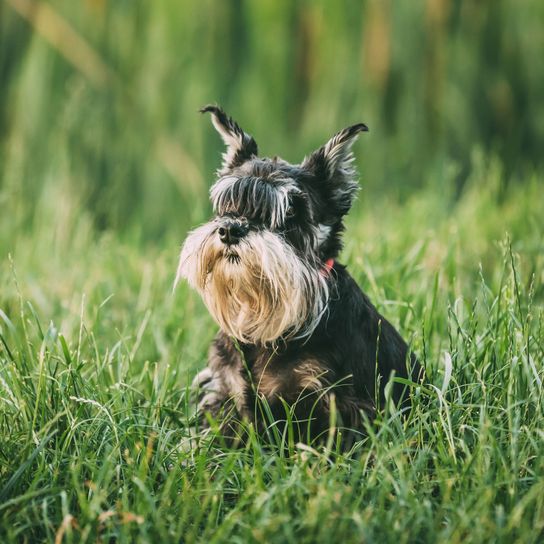
| Alternate Name | - |
| Origin | Germany |
| Life expectancy | 12 - 15 years |
| Care requirements | high-maintenance |
| Activity level | high |
| FCI group | Pinscher and Schnauzer type |
| AKC group | Terrier Group |
| KC group | Terrier Group |
Miniature Schnauzer mixes
Attitude, character and temperament of the breed
Typical character traits of the Miniature Schnauzer
Miniature Schnauzers are very spirited, intelligent dogs of high courage and grit, loyal to their masters. With some guidance, they are pleasant, obedient companion dogs and well suited to inexperienced dog owners. The dogs integrate well with families and are friendly with children. They are also easy to keep in smaller city apartments.
However, due to their innate natural alertness, they sometimes tend to bark loudly as soon as someone approaches the door or rings the doorbell. If the great urge to move of these dogs is not sufficiently taken into account, they develop therefore also sometimes fast from boredom to yappers - or look for themselves an occupation, which does not always lead to the joy of the owners.
Education and occupation possibilities
With daily walks, ball and search games, running, swimming and other activities, this can be avoided as far as possible. The miniature Schnauzer needs consistent but loving training that lasts throughout the dog's life. He does not forgive rudeness.
However, the docile dogs need clear rules. They often react stubbornly and willfully to inconsistencies in house rules. Also an early socialization is absolutely advisable. Then the little bundle of energy will also accept other four-legged friends without any problems.
Character
Usage
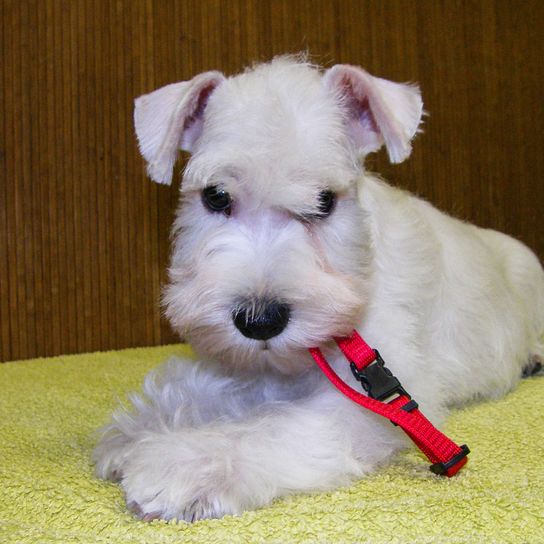
Breed-typical diseases of the Miniature Schnauzer
Miniature Schnauzers are naturally robust, hardy dogs and not very susceptible to disease. But there are some breed-specific disease patterns that should be known.
Particularly common is the so-called sicca syndrome, which results from a lack of production of tear fluid: The result of this can be inflammation and infection of the eyes. However, this condition is not life-threatening and can be treated well with medication (e.g. eye drops). Occasional cases of PRA (progressive retinal atrophy) or PL (loose patella) may also occur. These diseases require veterinary treatment. In addition, the following diseases are frequently seen in the Miniature Schnauzer:
- pancreatitis (inflammation of the pancreas)
- elevated blood fat levels
- diabetes
- bladder stones
However, with proper care and feeding, nothing stands in the way of a long and healthy dog's life. They can easily reach an age of up to 14 years.
Care and nutrition of the Miniature Schnauzer
The wiry, short coat of the dogs must be brushed completely twice a week. Regular trimming at the groomer is recommended, which also removes dead hair. However, with some practice and guidance, you can trim your dog yourself. In addition, regular control of the eyes, ears and claws is to be paid attention.
This breed also does not have special dietary requirements.
Breeding, purchase and adoption
If you want to buy a Miniature Schnauzer, you should only go to a breeder who is affiliated with an appropriate breeding club. Only then you have the guarantee that the Miniature Schnauzer breeding is done according to the standard of the FCI, the dogs have a healthy genetic material and in the first but crucial weeks of life already started with a good socialization.
A puppy with all recommended vaccinations and preventive examinations costs about 1,200 euros. An alternative and cheaper way to get your Miniature Schnauzer are animal shelters. There, with a little luck, a Miniature Schnauzer is waiting for a new home.

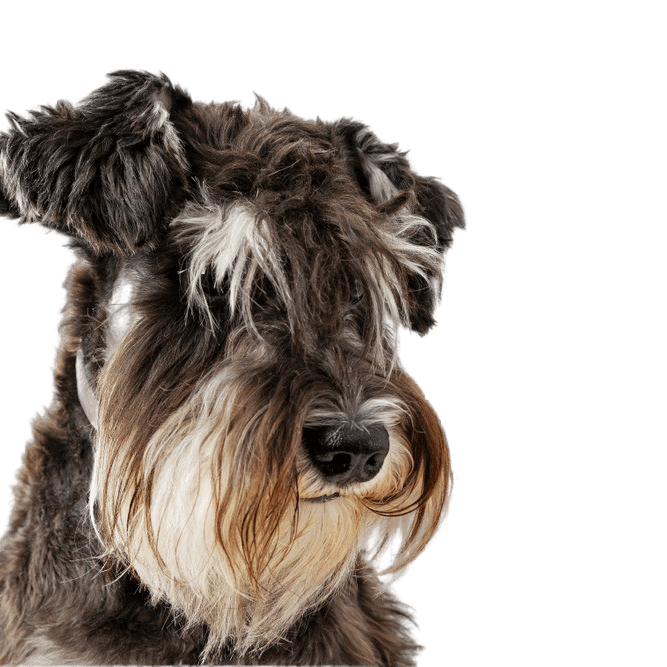
Breed characteristics of the Miniature Schnauzer
The Miniature Schnauzer is a breed recognized by the FCI: FCI - Standard No. 183, Group 2 (Pinscher and Schnauzer - Molosser - Swiss Mountain and Cattle Dogs), Section 1 (Pinscher and Schnauzer). No working test is required.
Size, weight and gait
A specimen of this breed grows to a height of about 30-35cm and reaches a weight of about 4 to 8 kg.
Despite its size, it has an elastic, elegant gait that is agile, free and ground covering. The forelegs swing forward as far as possible, the hindquarters give - reaching out and springing - the necessary thrust. The front leg of one side and the hind leg of the other side are led forward at the same time. The back, ligaments and joints are firm.
The head
The relatively strong skull of the Miniature Schnauzer is elongated, without a strongly protruding occiput, but with a stop which appears clearly pronounced by the brows. The head should match the vigor of the dog. The forehead is flat and runs wrinkle-free and parallel to the bridge of the nose.
The muzzle
The muzzle, the bridge of which is straight, ends in a blunt wedge. The nasal tip on it is well developed and always black. Also black are the lips, which are tight and smooth against the jaws and the corner of the lips should be closed.
Typical for the Miniature Schnauzer is a scissor bite. The chewing muscles should be strongly developed, without however a too strongly developed cheek formation disturbing the rectangular head form (with beard).
The eyes & ears
This dog's nose has oval, dark eyes that are forward with lively expression and well fitting lids.
Its V-shaped folding ears should be set high and carried evenly, so that the inner edges of the ears rest against the cheeks and are still turned forward towards the temples - but the parallel folding should not overhang the top of the head.
The torso
The muscular neck of the Miniature Schnauzer is raised. The strongly set on, slender and nobly curved neck merges harmoniously into the withers and the throat skin lies tight and wrinkle-free.
Starting from the withers, which form the highest point, over the strong but short and tight back, the upper profile line slopes slightly to the rear. Thus the short loins lie equally strong but low. The distance from the last rib to the hip is short, so that the dog appears compact. The croup runs in a slight curve and goes imperceptibly into the tail set.
In contrast, the chest should be oval in cross-section and reach to the elbows. The forechest is distinctively formed by the tip of the sternum. Miniature Schnauzers do not have excessively tucked up flanks, forming a nicely curved line with the underside of the rib cage.
The tail
In the breed standard, the tail is desired natural. The breeding goal corresponds to a saber or sickle tail.
The limbs
Any joints should turn neither in nor out.
The forelegs, seen from the front, are stocky, straight and not tightly set. The shoulder blade lies firmly against the rib cage, is well muscled on both sides of the shoulder blade bones and overhangs the spinous processes of the thoracic vertebrae at the top. As oblique as possible and well laid back, the angle to the horizontal is about 50°. The upper arm also lies well against the trunk, is strong and muscular with an angle to the shoulder blade of about 95° to 105°. Seen from all sides, the forearm is completely straight, strongly developed and well muscled. The following strong fore tarsal joint, although stable, stands out only insignificantly from it. The pastern is vertical when viewed from the front, slightly oblique to the ground when viewed from the side, and is strong but slightly springy.
Seen from the side, the hindquarters are sloping, and seen from the rear, they are parallel but not close together. The thigh of this breed of dog should be broad and strongly muscled, the long lower thigh long and sinewy merging into a powerful hock that is pronouncedly angulated and stable. The hind pastern is relatively short and perpendicular to the ground.
The paws should be short and round with closely knit and arched toes ("cat feet" as well as short, dark nails and coarse pads.
The coat
The skin of the Miniature Schnauzer, close fitting to the whole body, carries wiry hard and dense hair. It consists of a dense undercoat and a topcoat that is by no means too short, hard, but lying close to the body. The top coat is rough, long enough to allow one to check its texture, but neither shaggy nor wavy. The hair on the legs tends to be not quite as harsh. On the forehead and ears it is short. As a typical characteristic, it forms on the muzzle the beard, which is not too soft, and the bushy brows, which slightly overshadow the eyes.
Color varieties of the Miniature Schnauzer
In terms of color, Miniature Schnauzers come in the following varieties: Pure black with black undercoat, pepper salt, black silver and pure white with white undercoat.
For peppersalz, the breeding objective is a medium tint with evenly distributed, well pigmented peppering and gray undercoat. Allowed are the color shades from dark iron-gray to silver-gray. All colors must have a dark mask underlining the expression, which should harmoniously match the respective color. Distinct light markings on the head, chest and legs are undesirable.
For the black and silver color, the breeding objective is black top coat with black undercoat and white markings above the eyes, on the cheeks, on the beard, on the throat, on the front of the chest two divided triangles, on the middle foot of the front legs, on the paws, on the inside of the hind legs and on the anus. The forehead, the nape of the neck and the outer sides of the ears should be black, like the outer coat.
| Fur length | medium |
| Fur | rough-haired |
| Ear shape | Tilt-ear |
| Tail | lang |
| Anatomy | muscular |
| Size ♀ | 30 - 39 cm |
| Weight ♀ | 5 - 8 kg |
| Size ♂ | 30 - 39 cm |
| Weight ♂ | 5 - 9 kg |
| Suitable For | Children |
Colors



FAQ
-
A Miniature Schnauzer is considered a guard dog and is therefore very protective and alert. He often barks. With a lot of training, however, he does not mutate into a barker.
-
A Miniature Schnauzer costs from 1800 euros. But depending on the size of the parents (small or Toy Schnauzer cost significantly more), and coloring also like to cost double.
-
Yes, Miniature Schnauzers have a hunting instinct. Their original breeding intention was to guard house and yard from rats and mice and to fight them.
-
12-15 years can become a Miniature Schnauzer.
-
In terms of color, Miniature Schnauzers come in the following varieties: Pure black with black undercoat, pepper salt, black silver and pure white with white undercoat.
-
Yes, the Miniature Schnauzer is also suitable as a beginner dog.
-
Yes, the Miniature Schnauzer is a family dog.
-
Yes, the Miniature Schnauzer is suitable for seniors.







